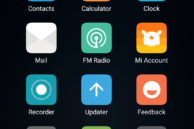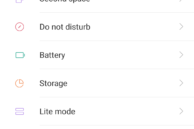
The Redmi Note 3 was among the most popular budget Android smartphones in India last year. For its price, the phone packed extremely powerful internals, a huge battery, and had decent build quality. It was not without its flaws though, with the 16MP rear shooter being a real disappointment.
10 months after the Redmi Note 3, Xiaomi is back with the Redmi Note 4. The handset is a meaningful update over its predecessor in some key departments, even though its spec sheet might suggest otherwise. But is the Redmi Note 4 as big of a game changer as the Redmi Note 3? Or is it just an evolutionary ’S’ upgrade? Find out in our review.
Design, Build Quality & Display
The Redmi Note 3 was a chunky handset mainly thanks to its 4100mAh battery. With the Redmi Note 4, Xiaomi has taken design cues from its gargantuan Mi Max. The latest Redmi has a very sleek and stylish design despite coming with the same capacity battery, and when compared to the Redmi Note 3, you will be hard pressed to say that both phones belong to the same family.

The use of a higher series aluminium alloy and the lack of plastic inserts at the top and bottom for the RF window at the rear go a long way in further reinforcing the premium feeling on the Redmi Note 4. The glass polished aluminium lines, which now act as an RF window, help add a sense of style to the rear, while the curved 5mm edges ensure that the Redmi Note 4 looks slimmer than its predecessor.
On the front, the Redmi Note 4’s 5.5-inch 1080p display is protected by a 2.5D curved glass, with the subtle curve making swiping from the edges a pleasant experience.
The rear mounted speaker of the Redmi Note 3 could be easily muffled when placed on a soft surface, and thankfully, Xiaomi has fixed that with the Redmi Note 4. The speaker is now located at the bottom, though there is only a single speaker. The second speaker grille houses the microphone and is present only for aesthetic purposes. And for all the folks with OCD, the microUSB port is now placed right in the centre at the bottom between the speaker grilles.

As for the 5.5-inch display, its brighter and more colour accurate than the panel found on the Redmi Note 3. It is also slightly narrower and taller thereby aiding one-handed use.
Performance and Battery Life
The Redmi Note 4’s Snapdragon 625 chipset has been a point of contention among many. The octa-core chipset is slower than the hexa-core Snapdragon Snapdragon 650 chipset found inside the Redmi Note 3 despite featuring more cores and higher clock speeds. Even the Adreno 506 GPU inside the Snapdragon 625 is also not as powerful as the Adreno 510 inside the Snapdragon 650.
The performance gap between the two chipsets is evident in benchmarks, but the difference is not something that you are going to notice in regular use. Even heavy games like Asphalt 8 and Asphalt Xtreme ran without any issues and skipped frames.
Yes, the Redmi Note 4’s chipset is slower than the one inside the Redmi Note 3, but it does not make any difference in regular use. In fact, thanks to the use of faster NAND storage, the Redmi Note 4 is actually able to load heavy games and apps faster than the Redmi Note 3.
The main highlight of the Snapdragon 625 chipset is that it is based on the 14nm FinFET process. This makes the chipset extremely power efficient which shows. Despite coming with a battery capacity (4100mAh) similar to one found on the Redmi Note 3, the Redmi Note 4 offers substantially better battery life. The handset regularly lasts well over two days for me on medium use. To be honest, I don’t even remember when was the last time I charged the Redmi Note 4 to 100 percent because I know that even with 30 percent battery left, the device can easily last a day.
The lack of Quick Charge 2.0/3.0 is a bummer since the handset takes well over 2.5 hours to charge from 0-100 percent. But then again, you don’t necessarily have to charge the handset to full to squeeze out more than a day of battery life.
Camera

The 16MP shooter of the Redmi Note 3 was one of its weakest points. With the Redmi Note 4, Xiaomi has tried making amends by using a 13MP Sony shooter with larger 1.12u pixels. The new camera sensor is a huge step up from the one found on the Redmi Note 3. The photos taken by the Redmi Note 4 come out more detailed with the right exposure level and contrast. In comparison, the Redmi Note 3 photos look washed out and overexposed with hardly any details.
The 13MP shooter does tend to struggle in low light, but it is nowhere near as bad as the 16MP camera of the Redmi Note 3. The presence of PDAF also helps greatly as the Redmi Note 4’s camera is able to focus on subjects quickly irrespective of lighting conditions.
Software
Like with other Xiaomi devices, the Redmi Note 4 runs on MIUI 8 which is based on Android 6.0 Marshmallow here. The skin is no intrusive that the version of Android the handset runs on is completely irrelevant. If you have ever used any Xiaomi device or MIUI before, you will feel completely at home with MIUI 8 on the Redmi Note 4. If not, brace yourself for a plethora of customisation options and features than you can possibly imagine.
While most of the customisation options in MIUI 8 will please power users, there are a few that definitely come in handy during regular use. This includes Dual apps that lets one run two separate instances of the same app which can come be particularly useful in some scenarios. Then, there is also Second space that lets you set up different work and home profiles.
For all the features it packs, MIUI is a very heavy skin which might not be liked by everyone. Thankfully, Xiaomi seems to have optimised the skin as I have not encountered any performance issues or sluggishness on the Redmi Note 4 yet.
Conclusion

On paper, the Redmi Note 4 might not seem like a game-changer as its predecessor, the Redmi Note 3. But once you look closely at the handset, you will realise that it has all the right changes and improvements that make it a worthy successor to the Redmi Note 3. What makes the handset even better is its pricing. Despite all the improvements it offers, Xiaomi has priced the Redmi Note 4 at the same level as the Note 3. In fact, the handset’s value for money ratio is now even higher since it comes with more storage. This means that for Rs 9,999, you get the 2GB/32GB variant of the Redmi Note 4 while paying an additional Rs 1,000 will get you the 3GB/32GB variant. For power users, Xiaomi is also offering a 4GB/64GB variant of the Redmi Note 4 for only Rs 12,999.
At such price levels, you will not find a more ‘complete’ smartphone than the Redmi Note 4, and thus it is the handset to buy within Rs 15,000.








![15 Best Gay Cam Sites for Live Webcam Chat [current_date format='Y'] 14 Gay Cam Sites](https://www.greenbot.com/wp-content/smush-webp/2025/01/Gay-Cam-Sites-150x150.png.webp)








